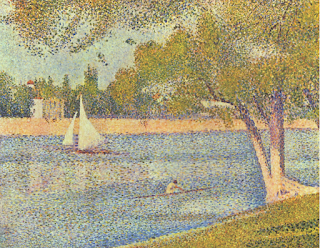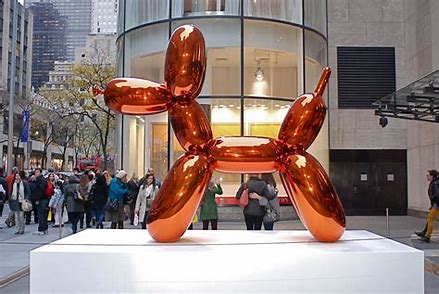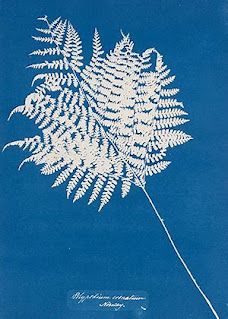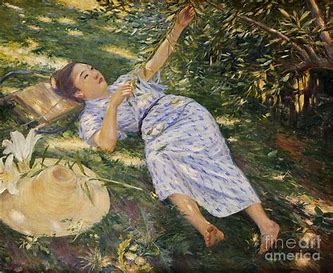Art Analysis Blog Post
For this week's art blog, I chose the painting The Seine at Le Grande Jatte (1888) by Georges Seurat (1859-1891). The painting was created in France in 1888 using oil paint on a 65 x 82 cm canvas. "It is currently housed at the Royal Museums of Fine Arts of Belgium."(The Seine at Le Grande Jatte, n.d.) The Seine at Le Grande Jatte is one of the most influential examples of the Pointillism style technique. It depicts a landscape along the Seine River on Le Grande Jatte Island. For those who are not familiar with the Pointillism style and technique, here is a little bit of background: Georges Seurat is considered the father of the Pointillism technique. The term Pointillism actually points out (pun intended) the most important element of this technique: the point. Pointillism is "... a highly systematic and scientific technique based on the hypothesis that closely positioned points of pure color mix together in the viewer's eye." (Sunday on La Grande Jatte, n.d.)

As a child, I was mesmerized by the arduous and meticulous Pointillism technique. To me, it seemed like the most beautiful union of art and science. I would be honored to own a copy of this magnificent work of art. I would enjoy viewing Goerges Seurat's paintings in a museum, of course. Georges Seurat used the La Grande island setting in many of his other paintings, for example, in his most famous painting, A Sunday Afternoon On the Island of La Grande Jatte. The horizontal lines of The Seine at Le Grande Jatte convey the feeling of the Seine river flowing. The warm colors let the viewer experience the beauty of the Seine in the spring/summer. The pointillism technique highlights the impression of leaf movement in the gentle breeze on a sunny day on the riverbank.
For me, the pointillism technique seems similar to the feeling you get when you see a person truly for the first time. I think everyone knows the feeling of when a phrase, movement, or tone lets you recognize a person as who they truly are. Pointillism paintings may, at first glance, seem like a chaotic array of dots, colors, and brush strokes, but the moment you move in front of the painting and find the right position, all those chaotic elements create an impression that is as true as life itself. You can feel the sun's warmth rising from the ground, feel the gentle cool wind above the river surface, and hear the rustling of the bright green leaves on the trees surrounding the riverbank. In pointillism art, everything is movement, impression, and emotion.
“A Sunday on La Grande Jatte - 1884.” The Art Institute of Chicago, Painting and Sculpture of Europe, n.d., www.artic.edu/artworks/27992/a-sunday-on-la-grande-jatte-1884. Accessed 4 Feb. 2024.
“The Seine at Le Grande Jatte (1888) by Georges Seurat.” Artchive, n.d., www.artchive.com/artwork/the-seine-at-le-grande-jatte-georges-seurat-1888/. Accessed 4 Feb. 2024.



Hello Chris,
ReplyDeleteThank you for the information on the Pointillism technique! This painting is really beautiful and unique. I agree, the warm colors makes you feel as if you are on that river bank enjoying the peaceful environment. I appreciate that the artist can still create a feeling of depth using different tones even when using this different technique.
Hello Chris,
ReplyDeleteI really like this painting, so much! This Pointillism technique was very interesting to read about and fascinating to look at. I enjoyed the picture as the tones give a feeling of calm with the blue of the water and the green of the trees and grass. Putting a sailboat in the water with the graceful lines of the sails established the an even more tranquil setting.
Hello Chris, your art blog beautifully captures the essence of Georges Seurat's masterpiece, "The Seine at Le Grande Jatte," and your personal connection with it resonates deeply. Your childhood fascination with the diligent Pointillism technique mirrors the enchantment many feel when encountering Seurat's work. Your desire to own a copy of this painting reflects its enduring allure and the profound impact it has had on you. Your comparison of Pointillism to the act of truly seeing someone for the first time is a captivating insight, highlighting the complex beauty of this artistic style. Your vivid descriptions transport the reader to the riverbank, evoking the sensory experience of standing before a Pointillism masterpiece. Overall, your comment beautifully captures the transformative power of art and the way it can evoke movement, impression, and emotion. Thank you for sharing !
ReplyDeleteChris,
ReplyDeleteI like how well formatted your blog is! I talked about a local artist myself, so there wasn't much to cite. This looks a bit more daunting, but I think you nailed it! In terms of what you'd said about the painting as well- the Pointillism technique looks equal parts beautiful and arduous. When you stop and appreciate the level of detail such a technique can display while also remaining so simple in a way, it really is astonishing. The technique does a great job of creating more subtle details- such as the shadows and reflections- all with through the use of warm colors like you'd mentioned. Truly a great piece- thanks for the incite on it as well!